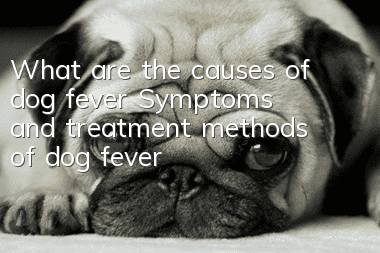How to determine ascites in cats and dogs

Methods for determining ascites in cats and dogs:
1. Cats and dogs will have obvious loss of appetite and increased water consumption. Breeders can carefully observe cats and dogs, because they are fed daily, and it is easy for breeders to notice when cats and dogs eat less.
2. Cats and dogs will become thinner and less lively than before. Because the reduction in food intake causes the cats and dogs to lose body fat, breeders can obviously see that the cats and dogs have become thinner and will not be as active as before.
3. Cats and dogs may have difficulty breathing after getting ascites. Breeders often see cats and dogs breathing abdominally.
4. Breeders can clearly observe that the abdomen of cats and dogs begins to sag, the lower abdomen shows symmetrical enlargement, and there is a feeling of fluctuation when being stroked. Because cats and dogs have ascites, there is fluid accumulation in the abdomen. If it is not discharged, it will gradually increase, causing obvious changes in the appearance of cats and dogs.
5. When going to the hospital for examination, it can also be determined through B-ultrasound and X-rays. When it is determined that there is abdominal effusion, part of the fluid can be aspirated and the color, texture, and smell of the ascites can be observed.
- Correct the bad habit of Golden Retriever jumping on people
- Precautions for pet sterilization surgery
- How old can a Smiling Angel Samoyed be to train? A must-read for pet owners!
- 5 tips to teach you how to identify whether a Corgi is a skewer and how to choose a Corgi variety!
- How to feed a pit bull to make it strong? How to raise a pit bull!
- Where is the origin of Golden Retriever?
- How to train a dog, these three dog-raising experiences will help you
- Raising a dog is not as easy as you think. You need to understand these things before raising a dog.
- What to do if your dog has ear inflammation
- How to treat meningitis in dogs



